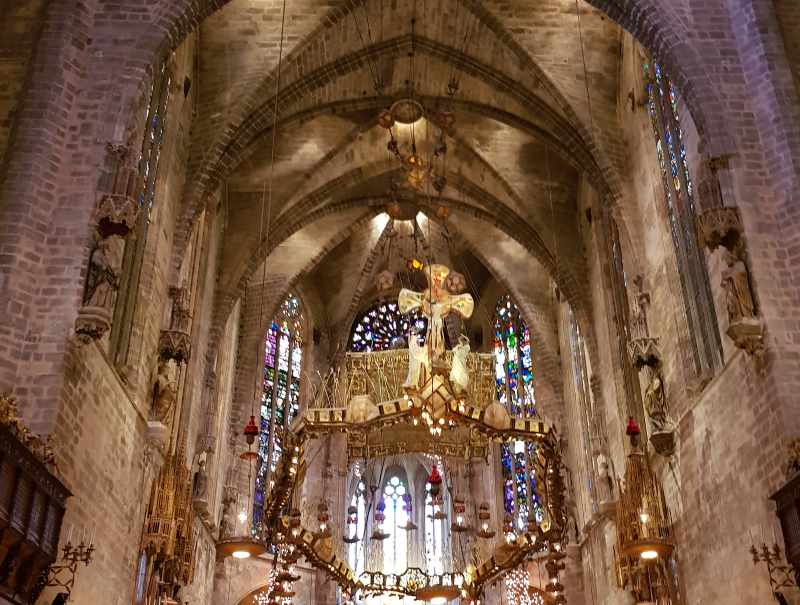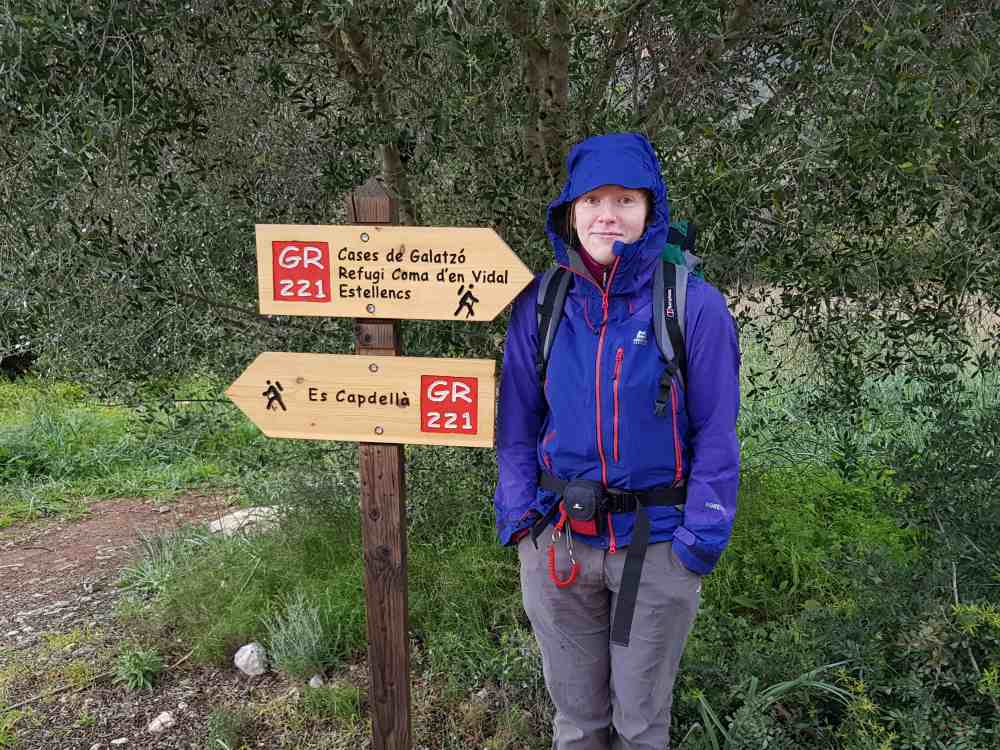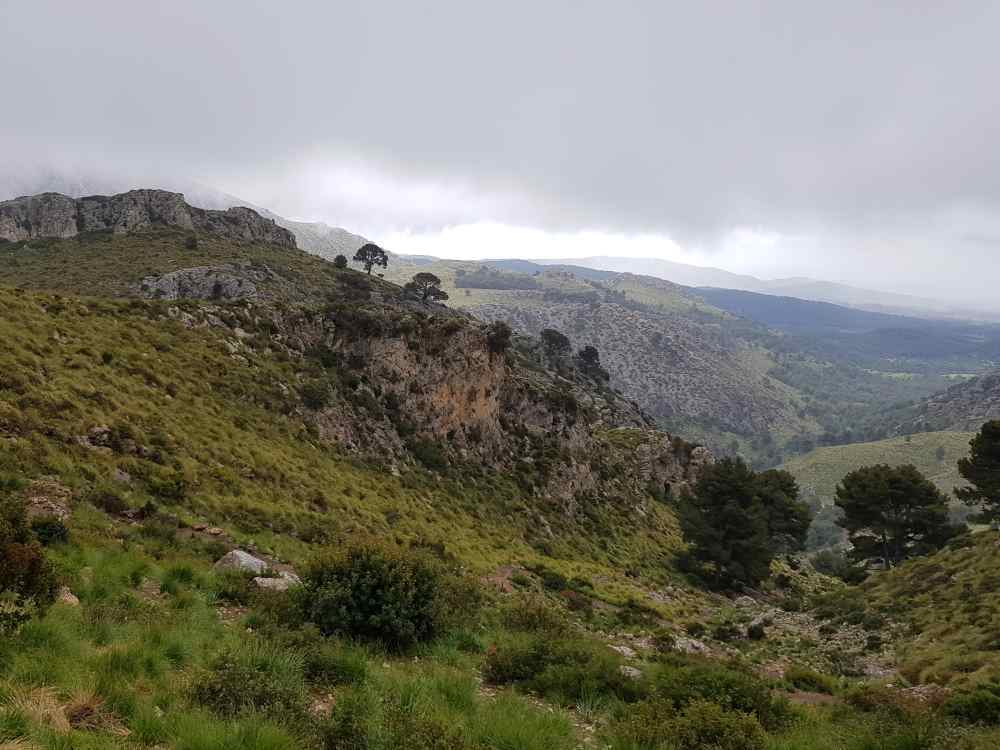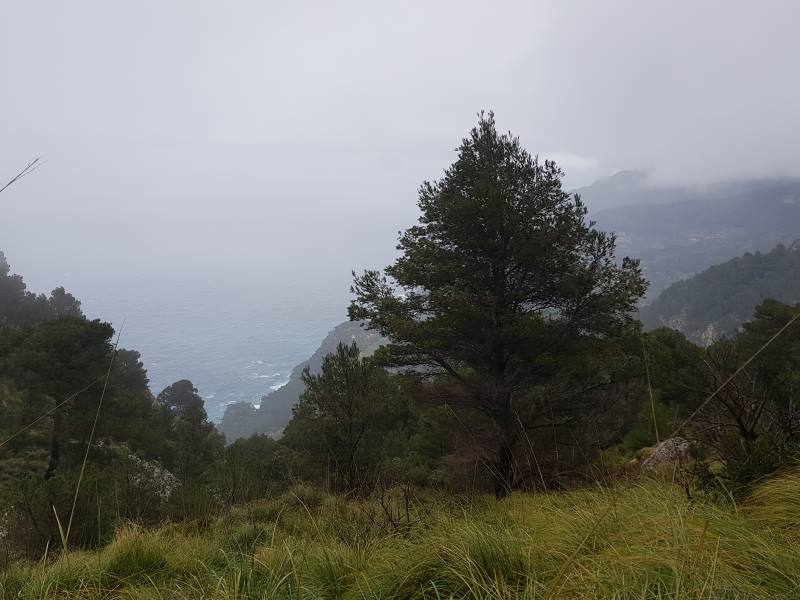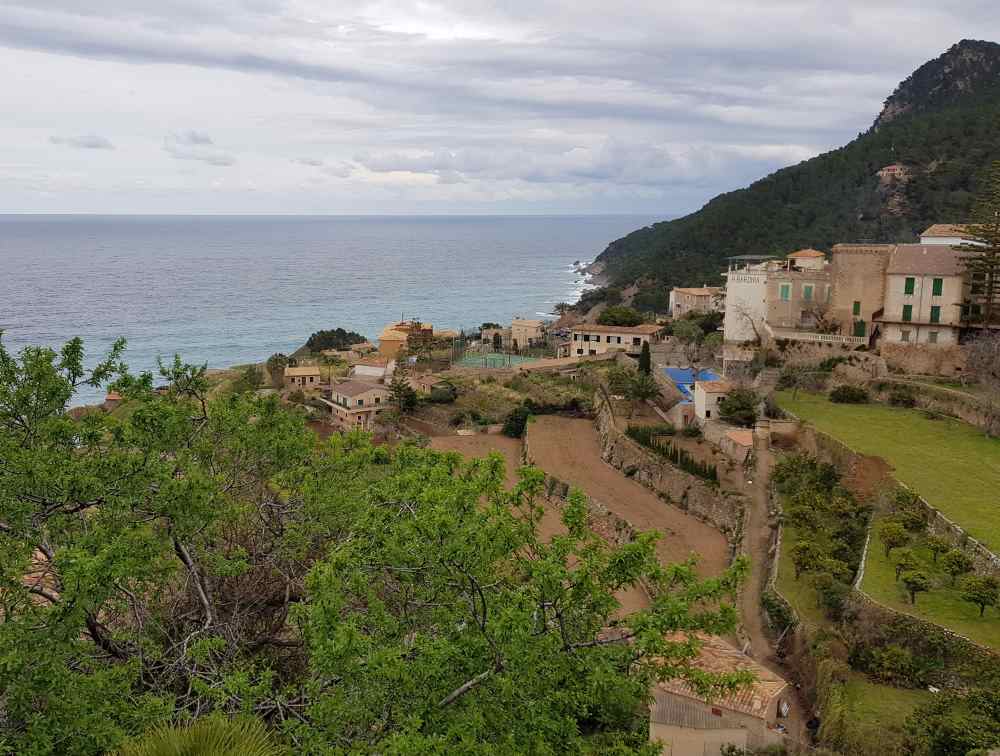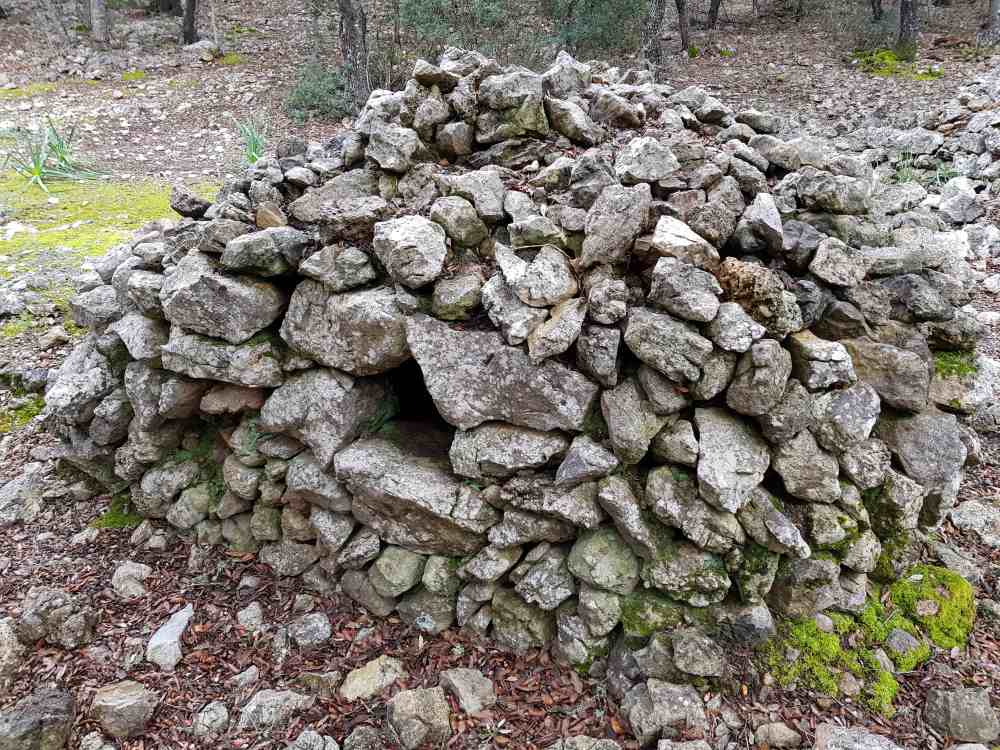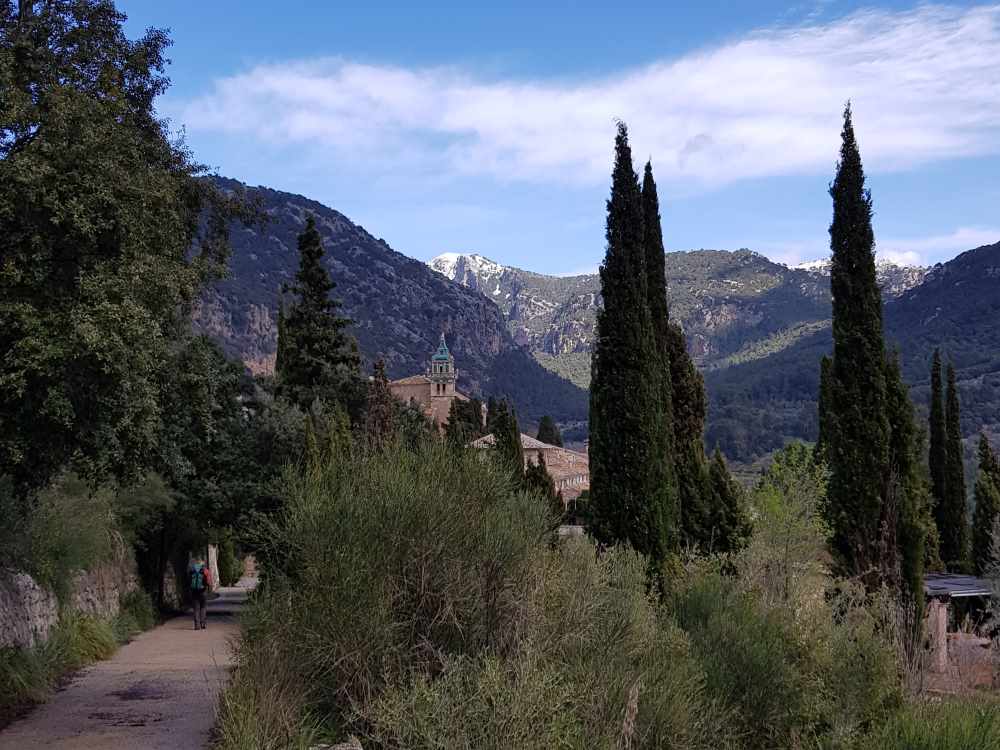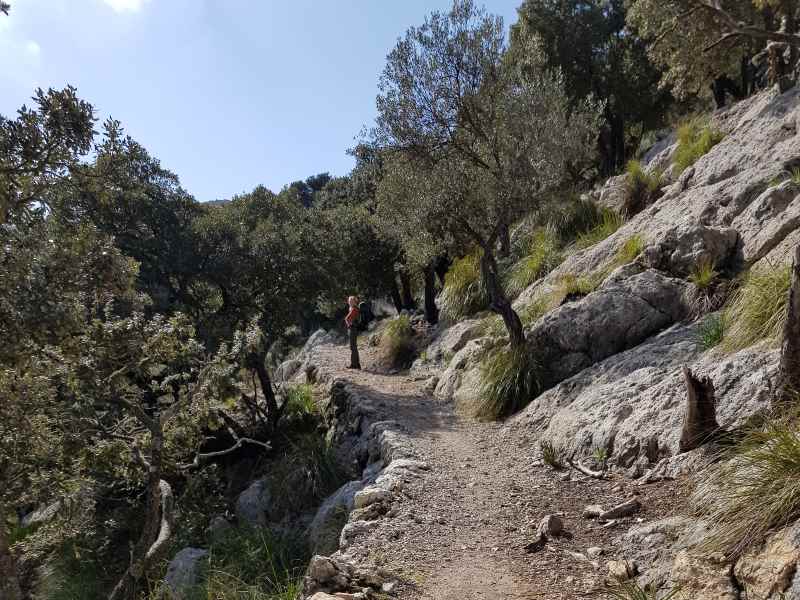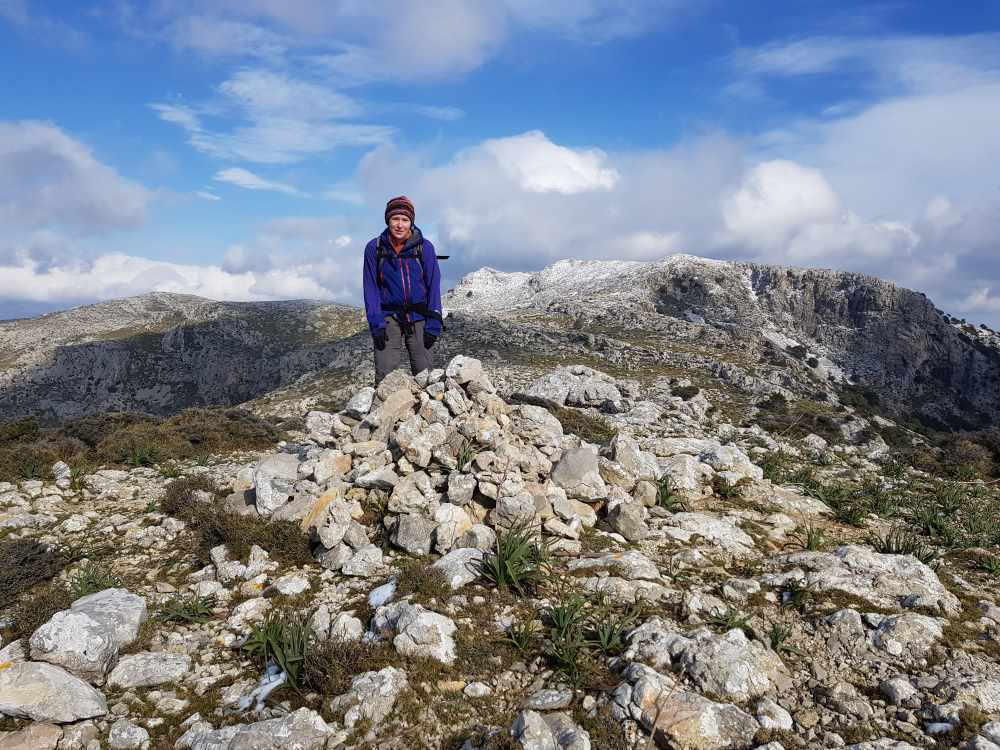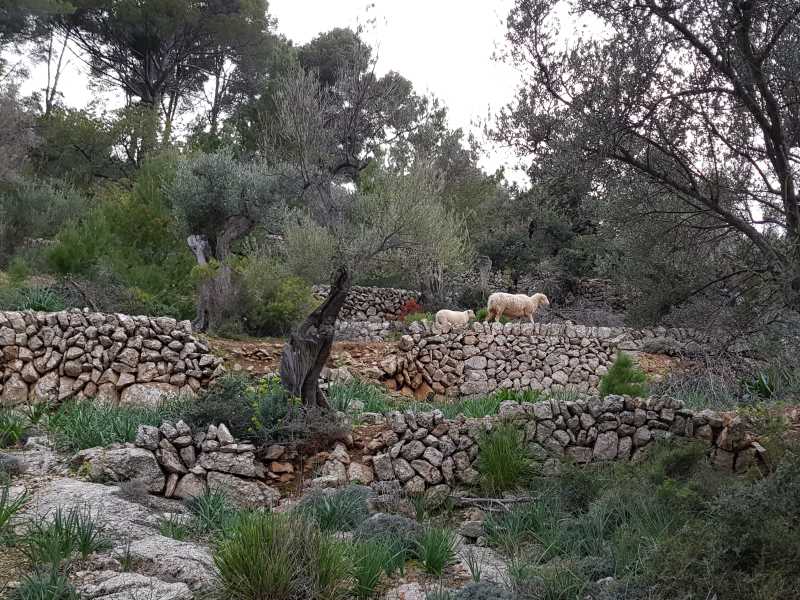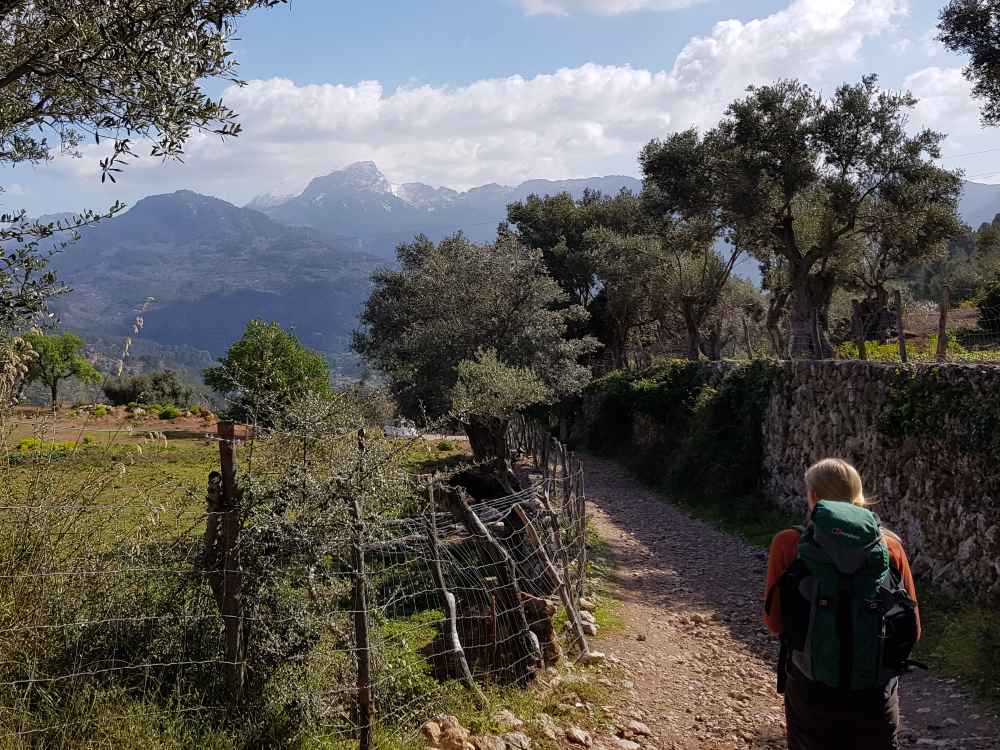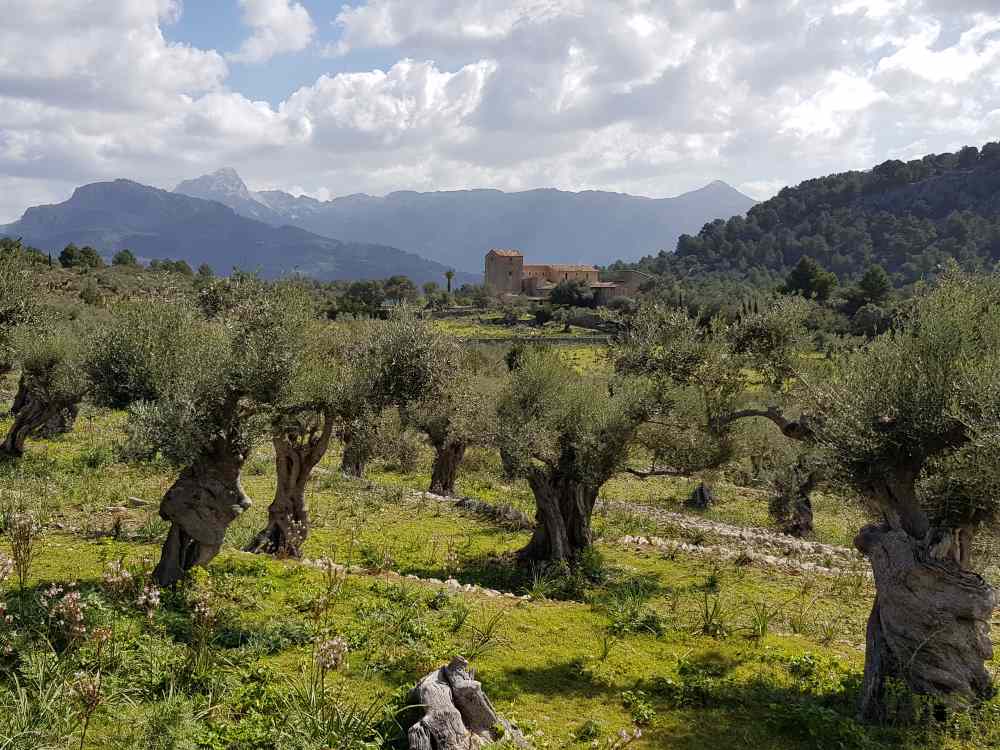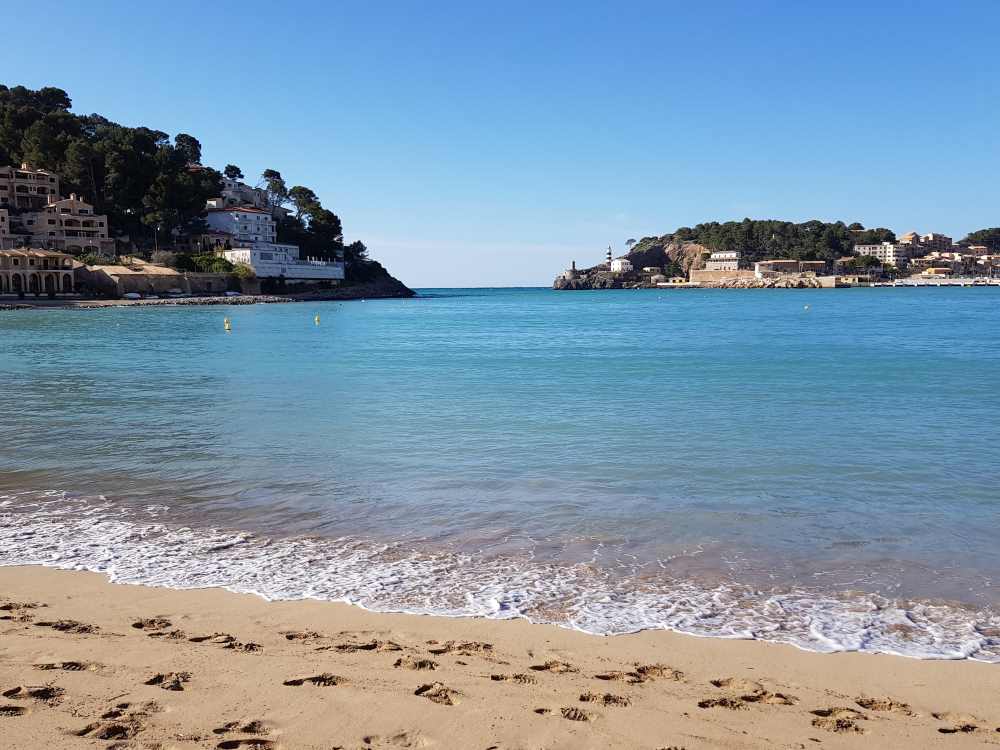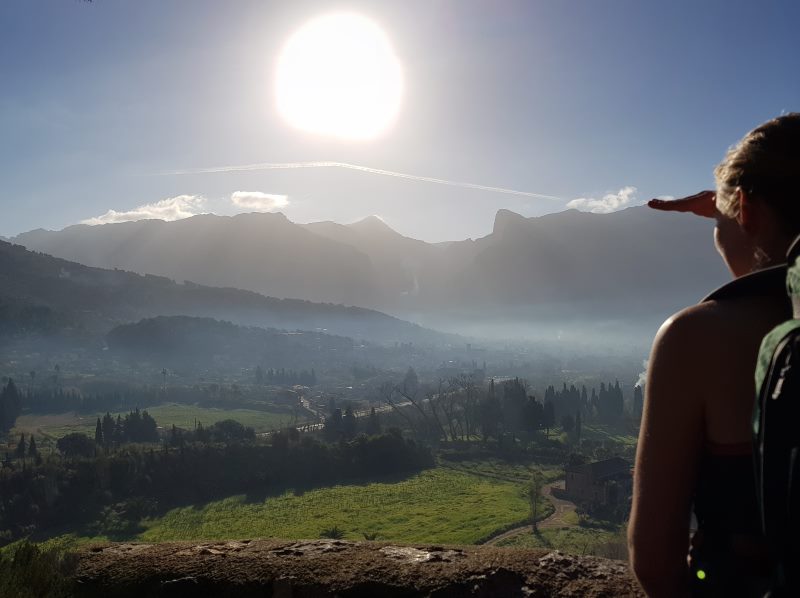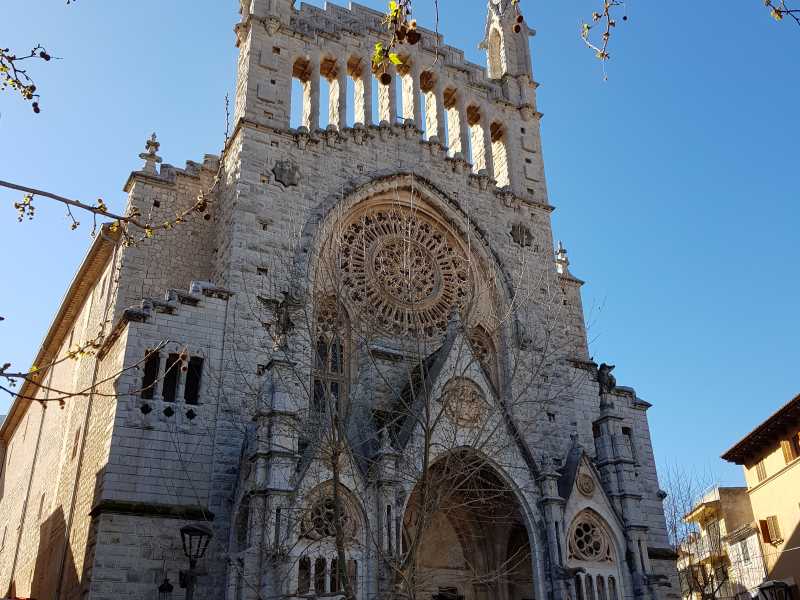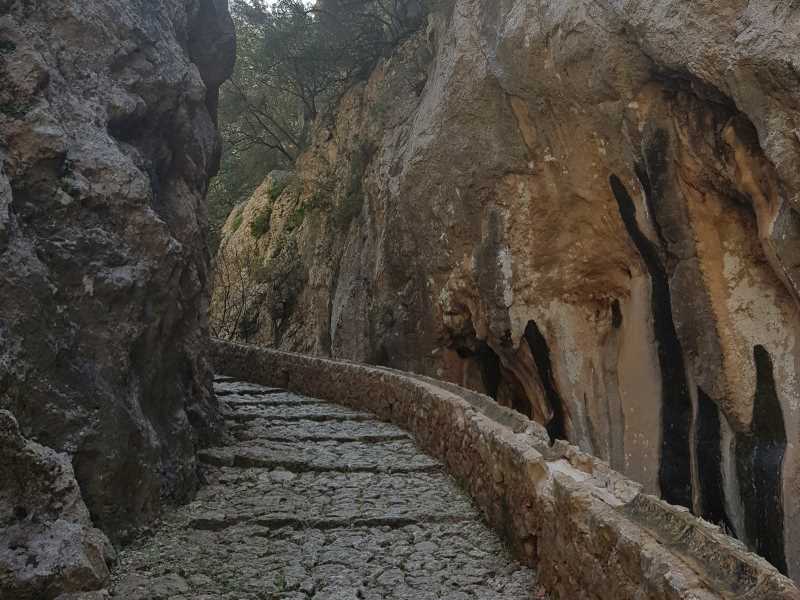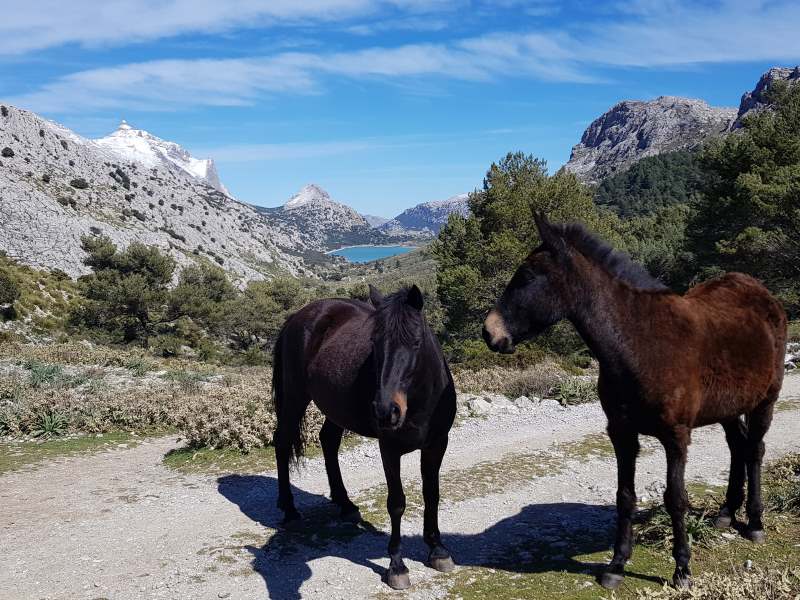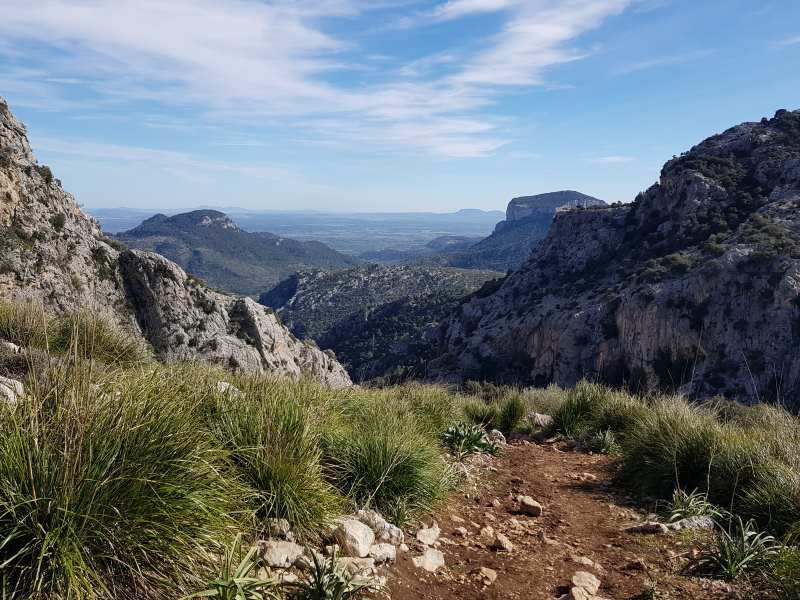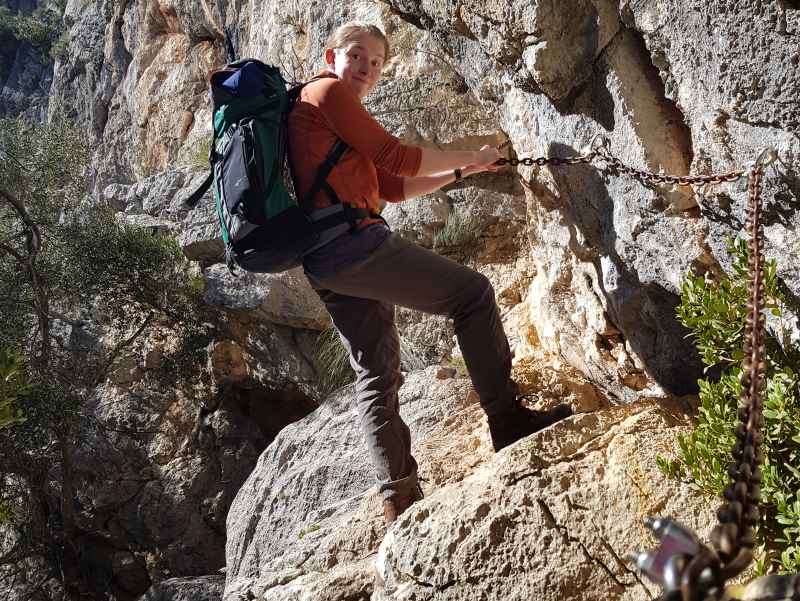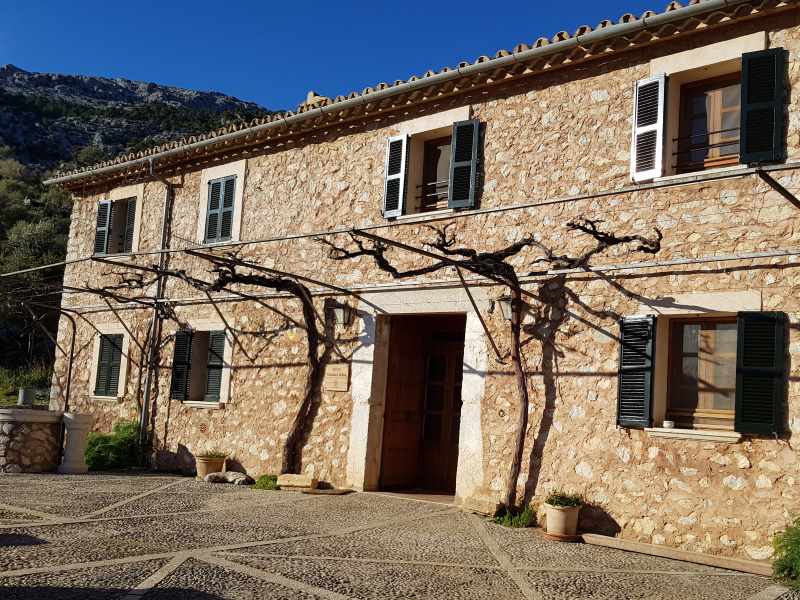Ruta de pedra en sec
"The Dry Stone Route" GR221
March 2018
In March 2018 I found myself with a short pre-allocated holiday and a friend who wanted to come walking. The question was where. We wanted to see mountains, but the Alps felt a bit too wintery and everything else was a bit too far away. Hours of internet searching led us to the GR221, the “dry stone route” of Mallorca. The route in its entirety covers 87 miles across the Serra de Tramuntana mountain range, taking a walker up the entire west coast of the island. In the interests of time (and some struggles with accommodation) we picked what we decided was “the best bit”, five days covering the 70 miles from Es Capdella to Caimari. The trail is/was still under some development but generally we found it to offer good walking. It is mostly well marked with decent availability of refuge accommodation (dormitory style bunkhouses) which could all be booked in advance and helped to keep the cost very reasonable. Most refuges include breakfast and dinner and it was generally pretty easy to acquire lunches and snacks along the way. My guide for the route was the excellent Cicerone publication Trekking in Mallorca which includes a full set of contour maps, suggestions for accommodation and transport and even a very short phrasebook.
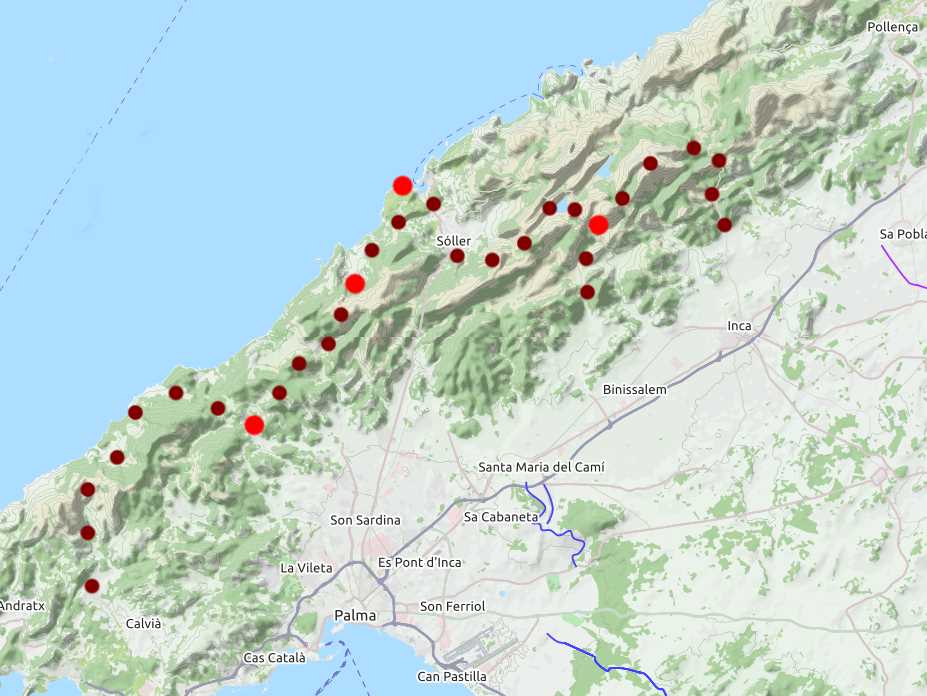
Day 1 Palma to Esporles
(18.75 miles/10 hours)
We arrive in Palma the previous evening and settle ourselves into the cheap and cheerful Palma Port Hostel perfectly situated by the bus stop. Our room mates are not overly impressed by our 6am start, and we are likewise unimpressed when our super early bus (L111 Palma to Es Capdella) breaks down meaning we really could have just stayed in bed and got the one at 9. Nevertheless by mid morning we are off, the path from Es Capdella weaving through olive groves in a light drizzle which turns to low cloud over our first pass (625m). With this being an alternative start to the main route we are pleasantly surprised by the quality of the signage with signposts at most junctions and an excellent guidebook description. From the ridge we join the main route which drops sharply then contours along next to the road (thankfully a quiet one) to reach Estellencs. This is a pretty little coastal town where we find some wonderful and enormous oranges for a late lunch and it would have made a perfect overnight stop except that the cheapest accommodation I could find (with about 1 month’s notice) was an all-inclusive spa. Bit out of the budget. So we pull the rucksacks back on and continue the 9 not especially inspiring miles to Esporles (there is a bus service but we felt that on day one that would be cheating) to stay at the Refuge son Trias for the much more reasonable price of 16 euros a head. Note, I was initially asked to pay in advance by international bank transfer (requiring some extortionate bank fees) but on e-mailing they were very helpful and agreed we could pay cash on arrival. The refuge has self-catering kitchen facilities but we treat ourselves to dinner out and are definitely spoilt for choice.
Day 2 Esporles to Deia
(14.5 miles/8 hours)
At the time of our walk the first section from Esporles to Valdemossa is officially closed due to disputes over land use and the guidebook suggests it is dense woods with no particular views and not really worth it anyway. But it is only day two and our feet only hurt a little bit from our epic 19 mile start and we really don’t fancy the alternative which is getting a bus back to Palma and out again to get round the mountains. Signage starts OK then just sort of vanishes. The book description holds out reasonably well though the path is also prone to vanish and reappear again on rocky tree-covered slopes. We make good time onto the plateau-like summit of Mola de son Pacs where we have a miss-understanding involving a bread oven (of which there are two – one on the right path and one on the wrong) and spend a good two hours wandering in circles in dense tree-cover. Eventually we realise our mistake and manage to get back onto the right path for a full speed march to Valdemossa to make up lost time. Sadly there is no time to go round the monastery but the next section makes up for it by being one of the best bits of the walk and the signposts are again plentiful. The sun comes out and, having escaped from the trees, we are rewarded with beautiful views as we take the Archduke’s path over the summit of Puig Gross (938m). The following descent into Deia is wonderfully steep with some airy views (though a little harsh on the knees) and ends in some semi-abandoned looking olive terraces with a rather overgrown path that occasionally has to be dug for. We stay at the Refugi can Boi where we share a slightly cramped six bunk room with three lads who promise they definitely don't snore (spoiler alert, it's a lie!).
Day 3 Deia to Port de Soller
(8 miles/3 hours)
A rest day! We enjoy a lie in (recovering from some epic snoring overnight!) followed by a slightly strange breakfast of dry bread dipped in oil. The sun is beating down and the path follows wide easy tracks contouring around the coast. Our accommodation for the night is the Refugi de Mulleta, situated by the old lighthouse above Port de Soller which can be booked online through the Consell de Mallorca. We arrive early in the afternoon giving time to drop the bags and wander into the town for ice cream and a quick paddle in the sea.
Day 4 Port de Soller to Tossals Verds
(14.75 miles/9 hours)
This is easily my favourite day of the trip. We take a slight deviation from the established route to use the road for an easy walk down to Port de Soller then strike out through fields as the sun rises above the mountains ahead. Soller itself is traversed reasonably easily and makes a good point for stocking up on supplies for the next two days in the mountains. From Soller the path climbs through several small villages (note another group skipped this section entirely by arranging a taxi from the refuge to Biniaraix but you’ve worked out by now that we go in for continuous walking and they missed a rather excellent sunrise) before climbing up the barranc de binaraix. This is a stunning old path, beautifully laid the whole way up the gorge with raised curving drainage channels running alongside. The path then crosses the shoulder of the mountain and runs along the shore of a small lake with good views of Puig Major, Mallorca’s highest summit. From here there are two route options to Tossals Verds with the main route taking a longer gentler ascent and a “more steep and rugged” variant with the promise of airy scrambles and some chain climbing. Sounds excellent. The scramble itself “Pas Lis” is a reasonably short but fun section and well protected, though on limestone it could be quite slippy in the wet. The beautifully situated Refugi de Tossals Verdes (again bookable through the Consell de Mallorca) is a welcome stop for the night with a freezing cold shower (I think we are the last to arrive) and a hearty dinner.
Day 5 Tossals Verds to Palma
(14.25 miles/9 hours) (6 miles/2 hours)
Our plan for the final day is to continue the GR221 to Luc then use the alternative finish F in the guidebook to descend to Caimari and from there bus (330 to Inca) and train back to Palma. Unfortunately the weather has other plans. After a beautiful few days of sunshine there is a large storm overnight with 60mph winds and snow predicted on the summits. As this is supposed to be our highest day with a 1100m peak we decide to give it a miss and instead followed “alternative finish E” down to Allaro through some torrential rain, thick cloud and thunder (sorry no photos, camera was hiding). We then hop on the 320 bus to Consell/Alaro station which links with the train to Palma to arrive in perfect time for a mid afternoon wander around the cathedral.
